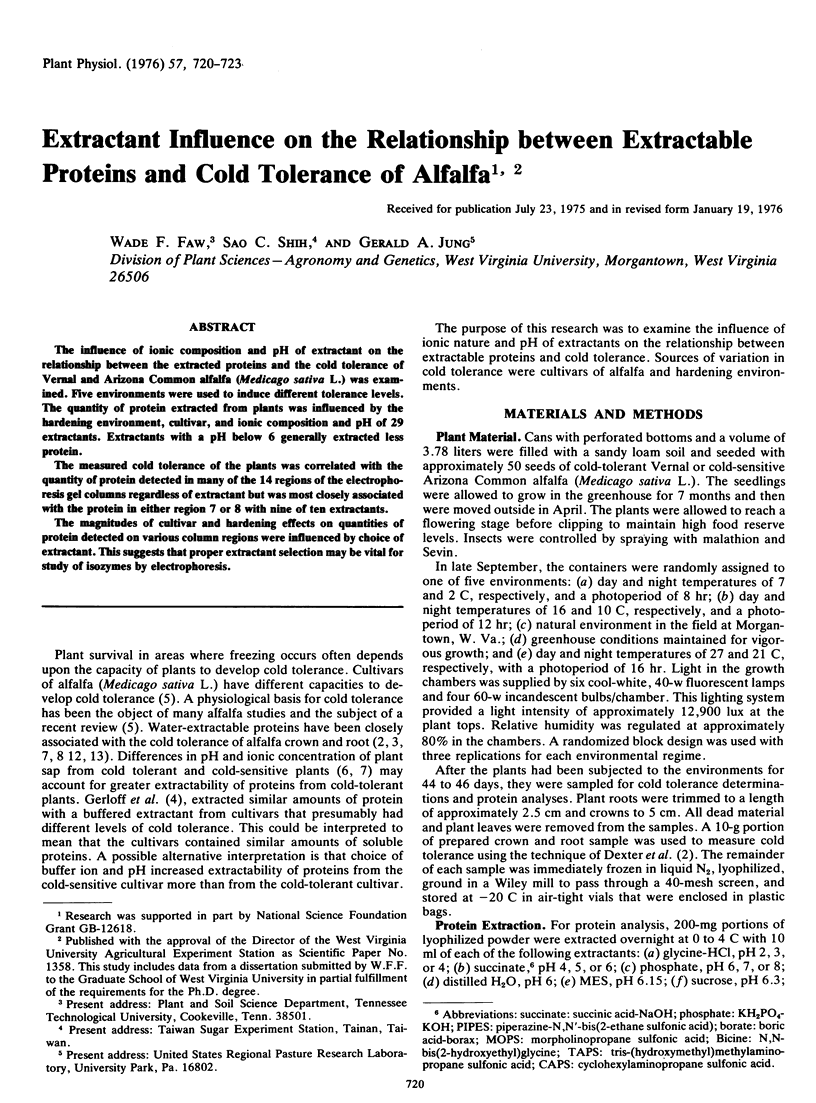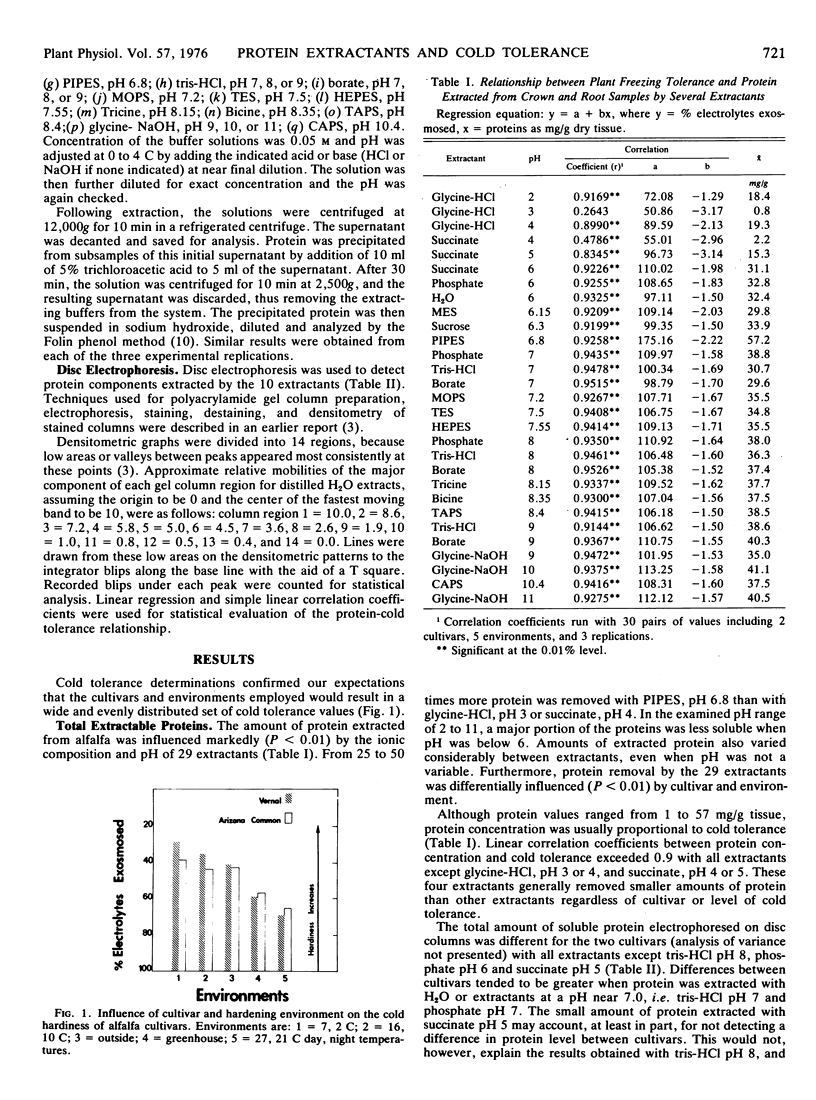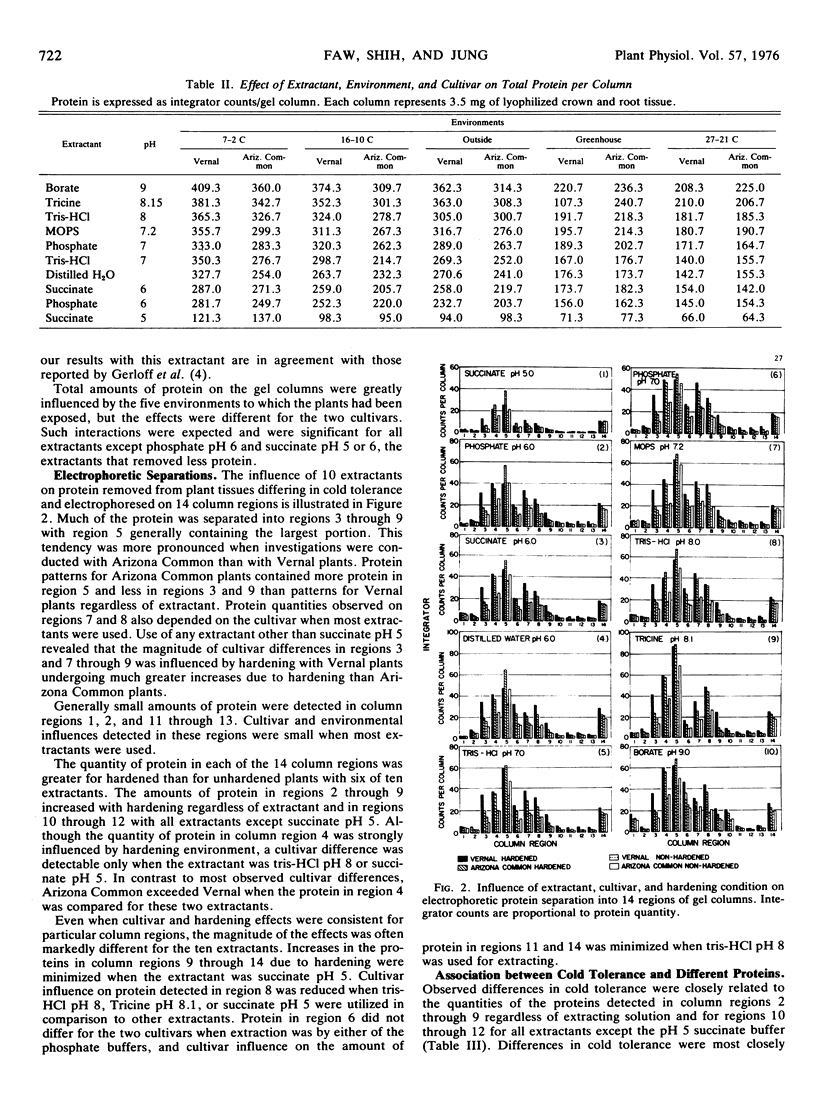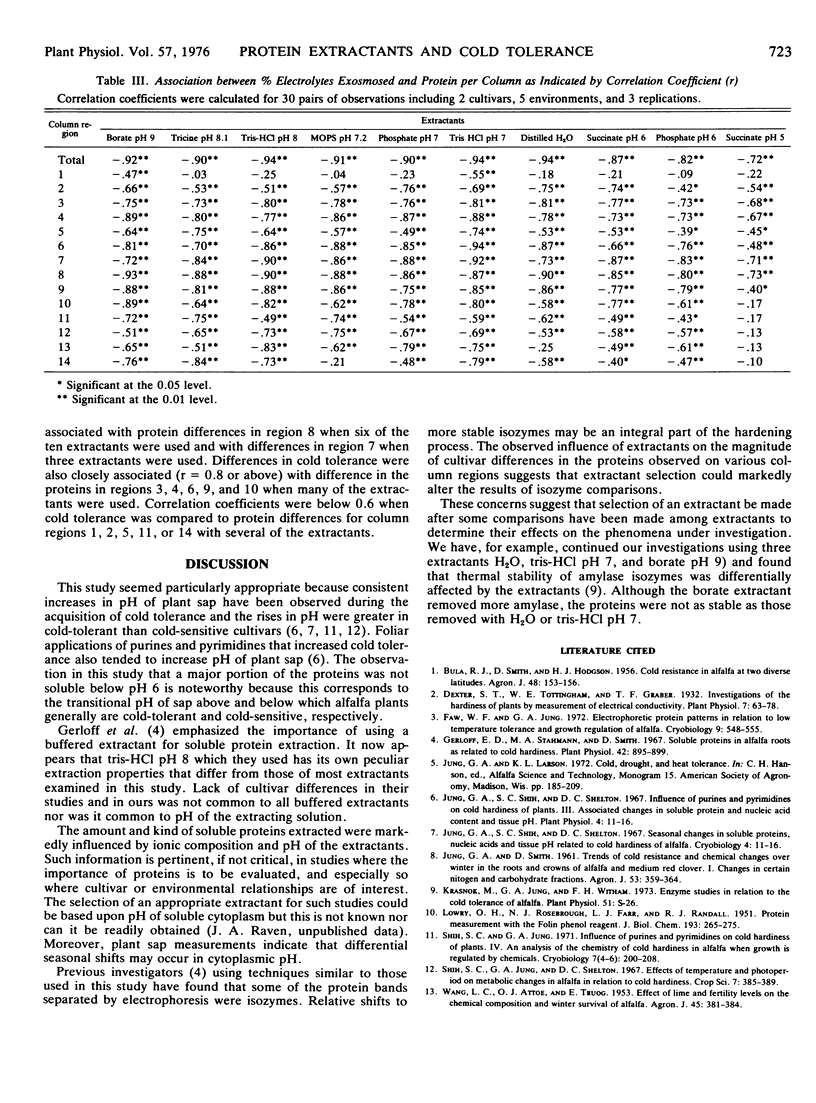Abstract
The influence of ionic composition and pH of extractant on the relationship between the extracted proteins and the cold tolerance of Vernal and Arizona Common alfalfa (Medicago sativa L.) was examined. Five environments were used to induce different tolerance levels. The quantity of protein extracted from plants was influenced by the hardening environment, cultivar, and ionic composition and pH of 29 extractants. Extractants with a pH below 6 generally extracted less protein.
The measured cold tolerance of the plants was correlated with the quantity of protein detected in many of the 14 regions of the electrophoresis gel columns regardless of extractant but was most closely associated with the protein in either region 7 or 8 with nine of ten extractants.
The magnitudes of cultivar and hardening effects on quantities of protein detected on various column regions were influenced by choice of extractant. This suggests that proper extractant selection may be vital for study of isozymes by electrophoresis.
Full text
PDF



Selected References
These references are in PubMed. This may not be the complete list of references from this article.
- Dexter S. T., Tottingham W. E., Graber L. F. INVESTIGATIONS OF THE HARDINESS OF PLANTS BY MEASUREMENT OF ELECTRICAL CONDUCTIVITY. Plant Physiol. 1932 Jan;7(1):63–78. doi: 10.1104/pp.7.1.63. [DOI] [PMC free article] [PubMed] [Google Scholar]
- Faw W. F., Jung G. A. Electrophoretic protein patterns in relation to low temperature tolerance and growth regulation of alfalfa. Cryobiology. 1972 Dec;9(6):548–555. doi: 10.1016/0011-2240(72)90177-0. [DOI] [PubMed] [Google Scholar]
- Gerloff E. D., Stahmann M. A., Smith D. Soluble proteins in alfalfa roots as related to cold hardiness. Plant Physiol. 1967 Jul;42(7):895–899. doi: 10.1104/pp.42.7.895. [DOI] [PMC free article] [PubMed] [Google Scholar]
- Jung G. A., Shih S. C., Shelton D. C. Seasonal changes in soluble protein, nucleic acids, and tissue pH related to cold hardiness of alfalfa. Cryobiology. 1967 Jul-Aug;4(1):11–16. doi: 10.1016/s0011-2240(67)80181-0. [DOI] [PubMed] [Google Scholar]
- LOWRY O. H., ROSEBROUGH N. J., FARR A. L., RANDALL R. J. Protein measurement with the Folin phenol reagent. J Biol Chem. 1951 Nov;193(1):265–275. [PubMed] [Google Scholar]
- Shih S. C., Jung G. A. Influence of purines and pyrimidines on cold hardiness of plants. IV. An analysis of the chemistry of cold hardiness in alfalfa when growth is regulated by chemicals. Cryobiology. 1970 Nov-Dec;7(4):200–208. doi: 10.1016/0011-2240(70)90022-2. [DOI] [PubMed] [Google Scholar]


